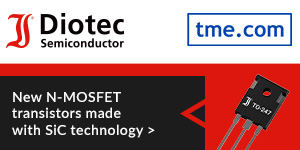The automotive industry is undergoing a profound transformation, shifting from mechanical-driven vehicles to software-defined vehicles (SDVs). This transition is not just about enhancing features but also about creating platforms that can adapt and evolve. SDVs are capable of upgrading their functionalities via over-the-air updates, thanks to the increased reliance on software for managing many critical vehicle systems. A cornerstone of this shift is the incorporation of advanced semiconductor technologies, particularly wide-bandgap (WBG) semiconductors such as silicon carbide (SiC) and gallium nitride (GaN). These materials offer superior performance compared to traditional silicon-based components, making them pivotal in supporting the next generation of electric and autonomous vehicles.
Wide-Bandgap Semiconductors: An Overview
WBG semiconductors, primarily represented by SiC and GaN, are becoming essential in automotive innovation due to their exceptional electrical and thermal properties. What sets these semiconductors apart is their ability to operate at significantly higher voltages, temperatures, and frequencies than conventional silicon-based components. This is possible because of their larger bandgaps—SiC has a bandgap of 3.3 eV and GaN about 3.4 eV, which is much wider than silicon’s 1.1 eV bandgap. The wider bandgap allows these semiconductors to handle higher electric fields, dissipate heat more efficiently, and reduce energy losses, making them ideal for high-performance applications.
In automotive systems, these characteristics translate into several key advantages. WBG semiconductors enable higher electrical efficiency, reduce the size of cooling systems, and increase the reliability of power electronics—all of which are critical as vehicles become more electrified and software-defined. Moreover, these semiconductors’ ability to function in extreme conditions makes them well-suited for next-generation automotive platforms.
Automotive Applications of WBG Semiconductors
The adoption of SiC and GaN in vehicles is revolutionizing various key systems, including power electronics, electric drivetrains, and charging infrastructure. WBG semiconductors are already playing a central role in enhancing electric vehicles’ performance, efficiency, and longevity (EVs).
- Power Electronics: WBG semiconductors are increasingly being utilized in inverters, which are essential components in EVs. Inverters transform the direct current (DC) from the battery into alternating current (AC), which is necessary to drive the electric motor. SiC and GaN components enable inverters to operate at higher voltages and temperatures, significantly improving power conversion efficiency. This not only leads to better energy utilization but also extends the range of EVs by reducing energy losses.
- Electric Drivetrains: The use of SiC in drivetrain systems allows EVs to handle higher power loads with greater efficiency. SiC components can manage faster switching speeds and higher temperatures, which enhances the overall performance of the electric motor. This means that vehicles can achieve better acceleration, longer driving ranges, and increased battery life—all critical for the next generation of electric vehicles.
- Charging Systems: Fast charging has become a major focus area for EVs, and WBG semiconductors are enabling significant advancements in this space. SiC and GaN components allow for faster switching speeds in power electronics, which supports ultra-fast charging stations. These components can handle higher voltages and currents without overheating, allowing vehicles to recharge in a fraction of the time required by traditional charging systems. This is a game-changer for EV owners, as it addresses one of the major pain points—long charging times.
Impact on Vehicle Performance and Efficiency
The integration of WBG semiconductors into EV systems fundamentally improves several key performance metrics, including vehicle efficiency, charging capabilities, and component longevity. These enhancements are critical as automakers strive to make EVs more appealing to mainstream consumers.
- Improved Electrical Efficiency: SiC and GaN semiconductors have lower electrical losses compared to traditional silicon components. In power electronics systems, such as inverters, this means that less energy is lost as heat during the conversion of electricity from the battery to the motor. Studies show that SiC inverters can improve efficiency by up to 3%, which translates into more of the battery’s energy being used for propulsion rather than being wasted. This improvement plays a direct role in extending the range of EVs.
- Extended EV Range: As WBG semiconductors improve the efficiency of critical systems like inverters and drivetrains, they also directly impact the vehicle’s range. Vehicles using SiC and GaN components can travel longer distances on a single charge, a feature that helps alleviate “range anxiety”—a common concern among potential EV buyers. The increased efficiency means that EVs can compete more effectively with traditional internal combustion engine vehicles in terms of range.
- Faster Charging Times: The use of WBG semiconductors in charging systems not only allows for faster charging speeds but also supports the development of higher-powered charging stations. SiC and GaN’s ability to operate at higher voltages and currents without overheating means that EVs can charge to 80% capacity in as little as 20 minutes. This reduction in downtime makes EVs more practical for long-distance travel and enhances their overall convenience.
- Longer Component Lifespan: WBG semiconductors are more durable and capable of withstanding extreme temperatures and voltages, which makes them less prone to degradation over time. This resilience leads to longer lifespans for critical components like inverters and chargers, reducing maintenance costs and increasing the overall lifecycle of the vehicle. For manufacturers, this means fewer warranty claims, while for consumers, it means lower repair costs over the vehicle’s lifetime.
Challenges and Limitations of WBG Semiconductors
Despite their many advantages, the adoption of WBG semiconductors in the automotive industry faces some challenges. One of the most significant is the cost. SiC and GaN materials are considerably more expensive than traditional silicon, and their production involves complex fabrication techniques. As a result, vehicles equipped with WBG components may have higher upfront costs, potentially limiting their market penetration in the short term.
Another challenge is the integration of these advanced materials into existing vehicle architectures. Automotive standards are stringent, and new technologies must undergo rigorous validation to ensure they can perform reliably under diverse and often harsh conditions. The need for extensive testing and validation may slow down the adoption of WBG semiconductors in mass-market vehicles.
The Road Ahead: Future Trends in WBG Technology
Looking forward, ongoing research and development in WBG semiconductor technology aim to overcome these challenges and further enhance their performance. Researchers are exploring ways to improve the efficiency and durability of SiC and GaN components while reducing production costs. Additionally, advancements in material science could lead to the development of new composite materials that combine the best properties of WBG semiconductors with other elements.
As WBG technology matures, it is expected to have a profound impact on vehicle design and functionality. The enhanced power-handling capabilities of SiC and GaN could lead to more compact and efficient vehicle architectures, freeing up space for other innovations. Furthermore, these technologies will play a key role in enabling more advanced software-defined features, such as autonomous driving systems and adaptive performance tuning.
Conclusion
Wide-bandgap semiconductors represent a critical enabler for the future of software-defined vehicles. Their superior electrical and thermal properties position them as indispensable components in next-generation EVs, offering enhanced efficiency, faster charging, and greater durability. However, realizing their full potential will require continued research, collaboration between automakers and semiconductor manufacturers, and innovations that address cost and integration challenges. As these obstacles are overcome, WBG semiconductors will play a transformative role in shaping the future of the automotive industry, driving more sustainable, efficient, and intelligent transportation solutions.
Citations from an article by Infineon Technologies







